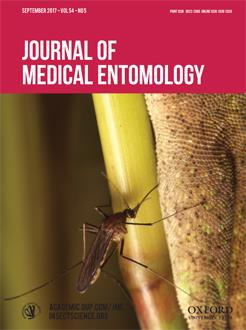The abundance and bloodfeeding patterns of mosquitoes was studied from 2008 to 2010 at an 18 ha. oak woodland in Lake County, CA. Host-seeking females were collected weekly from sunset to sunrise by paired dry-ice-baited CDC style traps, whereas resting females were aspirated from paired walk-in red boxes. Sequences of the COI gene amplified from bloodmeals from engorged resting females were used to identify the bloodmeal hosts. Aedes sierrensis (Ludlow) and Aedes increpitus Dyar complex mosquitoes were univoltine, although the timing of emergence and abundance varied temporally and seemed weather dependent. Abundance of both Anopheles franciscanus McCracken and Anopheles freeborni Aitken peaked in mid to late summer. Females of both genera bloodfed primarily on mule deer and black-tailed jackrabbits, and few fed on either dogs or humans that were consistently present within the woodland. In contrast, multivoltine Culex tarsalis Coquillett and Culex stigmatosoma Dyar were abundant throughout summer, especially from July to September. Both Culex species bloodfed on a wide variety of avian hosts, with most bloodmeals originating from California scrub-jay, wild turkey, oak titmouse, and house finch. Culex tarsalis fed on proportionately more mammals as summer progressed, peaking at 33% in September.
How to translate text using browser tools
2 May 2017
Abundance and Bloodfeeding Patterns of Mosquitoes (Diptera: Culicidae) in an Oak Woodland on the Eastern Slope of the Northern Coast Range of California
Tara C. Thiemann,
David L. Woodward,
Ying Fang,
Bonnie M. Ryan,
Brittany M. Nelms,
Jamesina J. Scott,
William K. Reisen
ACCESS THE FULL ARTICLE
It is not available for individual sale.
This article is only available to subscribers.
It is not available for individual sale.
It is not available for individual sale.

Journal of Medical Entomology
Vol. 54 • No. 5
September 2017
Vol. 54 • No. 5
September 2017
Aedes
Anopheles
Culex
ecology and population dynamics
feeding behavior




